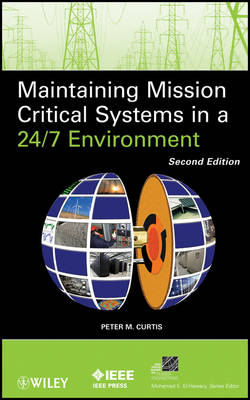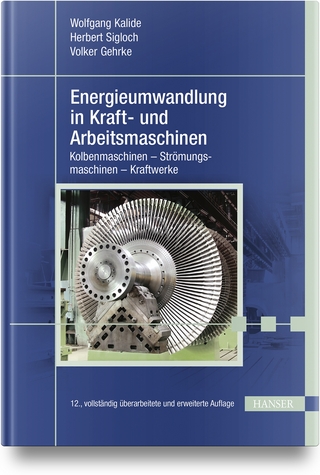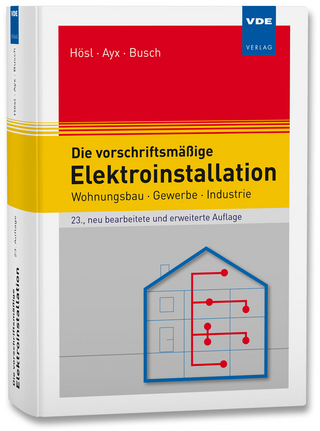
Maintaining Mission Critical Systems in a 24/7 Environment
John Wiley & Sons Inc (Verlag)
978-0-470-65042-4 (ISBN)
- Titel erscheint in neuer Auflage
- Artikel merken
This book is meant to offer Architects, Property Mangers, Facility Managers, Building Engineers, Information Technology Professionals, Data Center Personnel, Electrical & Mechanical Technicians and students in undergraduate, graduate, or continuing education programs relevant insight into the Mission Critical Environment with an emphasis on business resiliency, data center efficiency, and green power technology. Industry improvements, standards, and techniques have been incorporated into the text and address the latest issues prevalent in the Mission Critical Industry. An emphasis on green technologies and certifications is presented throughout the book. In addition, a description of the United States energy infrastructure's dependency on oil, in relation to energy security in the mission critical industry, is discussed. In conjunction with this, either a new chapter will be created on updated policies and regulations specifically related to the mission critical industry or updates to policies and regulations will be woven into most chapters.
The topics addressed throughout this book include safety, fire protection, energy security and data center cooling, along with other common challenges and issues facing industry engineers today.
Peter M. Curtis is the founder of Power Management Concepts, LLC. He has twenty-eight years of experience designing, operating, managing, and educating in the mission critical facilities engineering industry. A keynote speaker for numerous semiannual conferences, Curtis is a member of the 7x24 Exchange, Association for Facilities Engineering, Institute of Electrical and Electronics Engineers, International Electrical Testing Association, International Facility Management Association, and the Association of Energy Engineers.
Chapter 1 An Overview of Reliability and Resiliency in Today s Mission Critical Environment. 1.1 Introduction. 1.2 Risk Assessment. 1.3 Capital Cost versus Operation Cost. 1.4 Critical Environment Workflow and Change Management. 1.5 Testing and Commissioning. 1.6 Documentation and Human Factor. 1.7 Education and Training. 1.8 Operation and Maintenance. 1.9 Employee Certification. 1.10 Standard and Benchmarking. 1.11 Conclusion. 1.12 Risk Analysis and Improvement. Chapter 2 Energy Security and its Effect on Business Resiliency. 2.1 Introduction. 2.2 Risks Related to Information Security. 2.3 How Risks are Addressed. 2.4 Use of Distributed Generation. 2.5 Documentation and Its Relation to Information Security. 2.6 Smart Grid. 2.7 Conclusion. 2.8 Risk Analysis and Improvement. Chapter 3 Mission Critical Engineering with an Overview of Green Technologies. 3.1 Introduction. 3.2 Companies Expectations; Risk Tolerance and Reliability. 3.3 Identifying the Appropriate Redundancy in a Mission Critical Facility. 3.4 Improving Reliability, Maintainability, and Proactive Preventative Maintenance. 3.5 The Mission Critical Facilities Manager and the Importance of the Boardroom. 3.6 Quantifying Reliability and Availability. 3.7 Design Considerations for the Mission Critical Data Center. 3.8 The Evolution of Mission Critical Facility Design. 3.9 Human Factors and the Commissioning Process. 3.10 Short Circuit and Coordination Studies. 3.11 Introduction to Direct Current in the Data Center. 3.12 Containerized Systems Overview. 3.13 Conclusion. Chapter 4 Mission Critical Electrical System Maintenance and Safety. 4.1 Introduction. 4.2 The History of the Maintenance Supervisor and the Evolution of the Mission Critical Facilities Engineer. 4.3 Internal Building Deficiencies and Analysis. 4.4 Evaluating Your System. 4.5 Choosing a Maintenance Approach. 4.6 Safe Electrical Maintenance. 4.7 Maintenance of Typical Electrical Distribution Equipment. 4.8 Being Proactive In Evaluating the Test Reports. 4.9 Conclusion. Chapter 5 Standby Generators: Operations and Maintenance. 5.1 Introduction. 5.2 The Necessity for Standby Power. 5.3 Emergency, Legally Required, and Optional Systems. 5.4 Standby Systems That Are Legally Required. 5.5 Optional Standby Systems. 5.6 Understanding Your Power Requirements. 5.7 Management Commitment and Training. 5.8 Standby Generator Systems Maintenance Procedures. 5.9 Documentation Plan. 5.10 Emergency Procedures. 5.11 Cold Start and Load Acceptance. 5.12 Non-Linear Load Problems. 5.13 Conclusion. Chapter 6 Fuel Systems Design and Maintenance. 6.1 Introduction. 6.2 Brief Discussion on Diesel Engines. 6.3 Bulk Storage Tank Selection. 6.4 Codes and Standards. 6.5 Recommended Practices for All Tanks. 6.6 Fuel Distribution System Configuration. 6.7 Day Tank Control System. 6.8 Diesel Fuel and A Fuel Quality Assurance Program. 6.9 Conclusion. Chapter 7 Power Transfer Switch Technology, Applications, and Maintenance. 7.1 Introduction. 7.2 Transfer Witch Technology and Applications. 7.3 Types of Power Transfer Switches. 7.4 Control Devices. 7.5 Design Features. 7.6 Additional Characteristics and Ratings of ATS. 7.7 Installation and Commissioning, Maintenance, and Safety. 7.8 General Recommendations. 7.9 Conclusion. Chapter 8 The Static Transfer Switch. 8.1 Introduction. 8.2 Overview. 8.3 Typical Static Switch One Line. 8.4 STS Technology and Application. 8.5 Testing. 8.6 Conclusion. Chapter 9 The Fundamentals of Power Quality. 9.1 Introduction. 9.2 Electricity Basics. 9.3 Transmission of Power. 9.4 Understanding Power Problems. 9.5 Tolerances of Computer Equipment. 9.6 Power Monitoring. 9.7 The Deregulation Wildcard. 9.8 Conclusion. Chapter 10 UPS Systems: Applications and Maintenance with an Overview of Green Technologies. 10.1 Introduction. 10.2 Purpose of UPS Systems. 10.3 General Description of UPS Systems. 10.4 Components of a Static UPS System. 10.5 Line Interactive UPS System. 10.6 Offline (Standby). 10.7 The Evolution of Static UPS Technology. 10.8 Rotary System. 10.9 Redundancy, Configurations, and Topology. 10.10 Energy Storage Devices. 10.11 UPS Maintenance and Testing. 10.12 Static UPS and Maintenance. 10.13 UPS Management. 10.14 Conclusion. Chapter 11 Data Center Cooling Systems. 11.1 Introduction. 11.2 Background Information. 11.3 Cooling Within Datacom Rooms. 11.4 Cooling Systems. 11.5 Components Outside the Datacom Room. 11.6 Components Inside Datacom Rooms. 11.7 Conclusion. Chapter 12 Data Center Cooling Efficiency and Advanced Technology. 12.1 Introduction. 12.2 Heat Transfer inside Data Centers. 12.3 Cooling and other Airflow Topics. 12.4 Design Approaches for Data Center Cooling. 12.5 Additional Considerations. 12.6 Hardware and Associated Efficiencies. 12.7 Best Practices. 12.8 Efficiency Problem Solving. 12.9 Conclusion. 12.10 Conversions, Formulas, Guidelines. Chapter 13 Raised Access Floors. 13.1 Introduction. 13.2 Design Considerations. 13.3 Safety Concerns. 13.4 Panel Cutting. 13.5 Access Floor Maintenance. 13.6 Troubleshooting. 13.7 Additional Design Considerations. 13.8 Conclusion. Chapter 14 Fire Protection in Mission Critical Infrastructures. 14.1 Introduction. 14.2 Philosophy. 14.3 Alarm and Notification. 14.4 Early Detections. 14.5 Fire Suppression. 14.6 System Designs. 14.7 Fire Detection. 14.8 Fire Suppression Systems. References. APPENDICES. Appendix A Policies and Regulations. A.1 Introduction. A.2 Industry Policies and Regulations. A.2.1 USA Patriot Act. A.2.2 Sarbanes-Oxley Act (SOX). A.2.3 Comprehensive Environmental Response, Compensation, and Liability act of 1980 (Superfund Act). A.2.4 Executive Order 13423: Strengthening Federal Environmental, Energy and Transportation Management. A.2.5 ISO27000 Information Security Management Systems (ISMS). A.2.6 The National Strategy for the Physical Protection of Critical Infrastructure and Key Assets. A.2.7 2009 National Infrastructure Protection Plan. A.2.8 North American Electric Reliability Corporation (NERC). A.2.9 U.S. Security and Exchange Commission. A.2.10 Sound Practices to Strengthen in the Resilience of the U.S. Financial System. A.2.11 C4I Command, Control, Communications, Computers and Intelligence. A.2.12 Basel II Accord. A.2.13 National Institute of Standards and Technology (NIST). A.2.14 Business Continuity Management Agencies and Regulating Organizations. A.2.15 FFIEC Federal Financial Institution Examination Council. A.2.16 National Fire Prevention Association 1600 Standard on Disaster/Emergency Management and Business Continuity Programs. A.2.17 Private Sector Preparedness Act. A.3 Data Protection. A.4 Encryption. A.5 Protecting Critical Data through Security and Vaulting. A.6 Conclusion. Appendix B Mission Critical Questions. Appendix C Airflow Management (A Systems Approach). C.1 Introduction. C.2 Control is the Key. C.3 Obtaining Control. C.4 Air Management Technologies. C.5 Conclusion.
| Reihe/Serie | IEEE Press Series on Power Engineering |
|---|---|
| Verlagsort | New York |
| Sprache | englisch |
| Maße | 156 x 251 mm |
| Gewicht | 840 g |
| Themenwelt | Technik ► Elektrotechnik / Energietechnik |
| Technik ► Maschinenbau | |
| Wirtschaft ► Betriebswirtschaft / Management | |
| ISBN-10 | 0-470-65042-7 / 0470650427 |
| ISBN-13 | 978-0-470-65042-4 / 9780470650424 |
| Zustand | Neuware |
| Haben Sie eine Frage zum Produkt? |
aus dem Bereich



